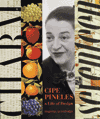
|
| Bookshelf Please send news of your recently published book along with a review copy, if possible, to "Bookshelf," Oberlin Alumni Magazine. Your review copy will be presented to the Oberlin College Library as a gift from you. |
 Nothing
is Terrible Nothing
is Terrible by
Matthew Sharpe '85
Villard,
2000
Reviewed
by David Walker, professor of English
"'That girl is not normal, and neither is the boy,' I overheard my uncle say to my aunt late one summer night a month after my parents had been killed in a car accident on the way home from a wedding. My twin brother Paul and I were ten years old at the time, and we were the children my childless uncle was talking about. 'The boy is sickly, that much we know,' he went on. 'The girl--hard to say what the trouble is there.'" By the end of the prologue of Matthew Sharpe's startlingly original first novel, Paul is dead, stung to death by bees in an accident for which his sister takes responsibility, but the reader has only begun to fathom the trouble with Mary White. Locked in grief and guilt, regularly pummeled by her classmates, Mary turns inward, arming herself in impassivity and selfishness. The edge of cruelty remains even when she falls passionately in love with her sixth-grade teacher, the statuesque Miss Skip Hartman, whereupon they forsake the suburbs for adventures in a sometimes glamorous, sometimes seedy, but always decadent Manhattan. "Passion" is the operative term here: the fierceness of Mary's need is so desperate that her love is not easily distinguishable from hatred, marked as it is by jealousy, betrayals, and woundings both literal and otherwise. Indeed, though rhetorically Sharpe's novel pays frequent homage to the prototypical female Bildungsroman Jane Eyre, I was often reminded of the more darkly Gothic product of the Yorkshire sister act: Mary is a postmodern Heathcliff, stubbornly uncompromising, utterly unsentimental, and violently herself. What that description leaves out of account is the unsettling effect of the book's narrative voice: even the most bizarre and traumatic events are filtered through the wry, deadpan sensibility of the adult Mary as she looks back to make sense of her life: "So what your humble memoirist is doing now, for your reading pleasure, is she opening the gate of her mind, flinging it open to memory, to kindness, to grief. Well, okay, she's nudging the gate open. She's leaving the gate ajar with the security chain still attached. Let's not get carried away here--a memorist needs her amnesia, her cruelty, her euphoria." Most often this voice conveys equanimity, the comforting knowledge that, no matter how painful Mary's journey, she will come out the other side--but periodic asides reveal a coruscating self-awareness: "I just happen to have been the kind of person who, when she was looking at a landscape out a window, got distracted by her own reflection. I guess what I'm saying is, I looked at the world and saw myself. Not that I'm proud of it, or of much else that I did or said or thought or felt or was." Perhaps the bravest aspect of Nothing is Terrible is its exploration of gender and sexuality. The affair between pupil and teacher is only the most blatant way in which Sharpe disturbs orthodox assumptions about what is "natural" or desirable. As Mary crops her hair, insists on being called Paul, and is repeatedly mistaken for a boy by Skip's ancient father, the conventional binarisms of gender are undermined. (There are several suggestions that she may in fact be a hermaphrodite.) Indeed, all the central characters, including Mary's gentle sometime-boyfriend Mittler, her fashion-plate Uncle Tommy, "delicate, pretty, fine-featured," and his mute, inexpressive wife Myra, resist gender stereotypes. Such edgy stuff is not for all tastes, of course. But as Mary seeks to redefine family values and work her family values and work her way toward redemption, Sharpe's deft hand produces a novel of haunting resonance and wit.  Washington:
The Spirit of the Land Washington:
The Spirit of the Land Text
by Lynda V. Mapes '81
Voyageur
Press, 1999
In this tribute to the Evergreen State, Mapes combines human and natural history into essays that accompany stunning photographs of Washington's well-known natural sites and lesser known regions. From the Snake River Valley, to the Coleville National Forest, to the panoramic Cascades, this book covers the breadth of the state. Mapes is a reporter for The Seattle Times, covering regional, natural resource, and environmental issues. Paranormal
Beliefs: A Sociological Introduction  Cipe
Pineles: a Life of Design Cipe
Pineles: a Life of Design By
Martha Scotford '66
W.W.
Norton & Co., 1999
A
pioneer in the development of graphic design, Cipe Pineles
became the first independent American female art director,
working at Condé Nast magazines including Glamour
and Seventeen from the 1930s
through 1950s. She later established her own business
and enjoyed a 25-year teaching career at Parsons School
of Design. With incredible detail, Scotford's book examines
Pineles' 60-year career and offers hundreds of her magazine
layouts, design work, and personal mementos. Scotford
is a professor of graphic design at the School of Design,
North Carolina State University.
Aid,
Nationalism and Inter-American Relations: Guatemala,
Bolivia, and the United States, 1945-1961
By
James F. Siekmeier '84
The
Edwin Mellen Press, 1999
In
a study that sets up a new framework for examining United
States-Latin American relations, this book argues that
U.S. policy toward Latin America was driven by a fear
of economic nationalism. Siekmeier explains how U.S.
officials used economic aid policy in Guatemala and
Bolivia to eliminate this apprehension, although some
Latin Americans wanted to control foreign trade and
investment, diversify the economy, and promote industrialization
in the 1950s. Siekmeier is an assistant professor of
history at Angelo State University in Texas.
Paradise
for Sale: A Parable of Nature
By
Carl N. McDaniel '64 and
John M. Gowdy
University
of California Press, 2000
For
more than 2,000 years, the isolated people of Nauru
Island lived in social and ecological stability. But
in 1900 the discovery of phosphate devastated the island
and forever changed its people. In 1968 Nauruans regained
rule of their island and sold the remaining 40-year
supply of phosphate. In the process they made most of
their homeland useless. The authors describe how the
island became one of the richest
nations in the world and how its citizens acquired all
the ills of modern life, having created a system in
direct conflict with sustaining the environment. McDaniel
is a professor of biology and director of undergraduate
environmental science at Rensselaer Polytechnic Institute.
Summer
at The End of The World
By
Kirsten Kingdon '63
Illustrations
by David R. Dudley '87
Banta
and Pool Publishers, 2000
Based
on autobiographical episodes from Kingdon's life,
this is a story of a woman who seeks solace from the
despair and sorrow brought on by the unanticipated
death of her beloved husband. Hoping to find tranquility,
she leaves the hurly-burly of Washington, D.C., and
flees to the Nova Scotia wilderness. The odyssey of
remembrance is healing, and the author extols the
blessings of familial love and the power of faith.
Kingdon, a lawyer and community activist, is a mother
and a grandmother, with a husband who is very much
alive. Selected as executive director of PFLAG in
May 1998, Kingdon continues her advocacy efforts on
behalf of gays and lesbians.
|